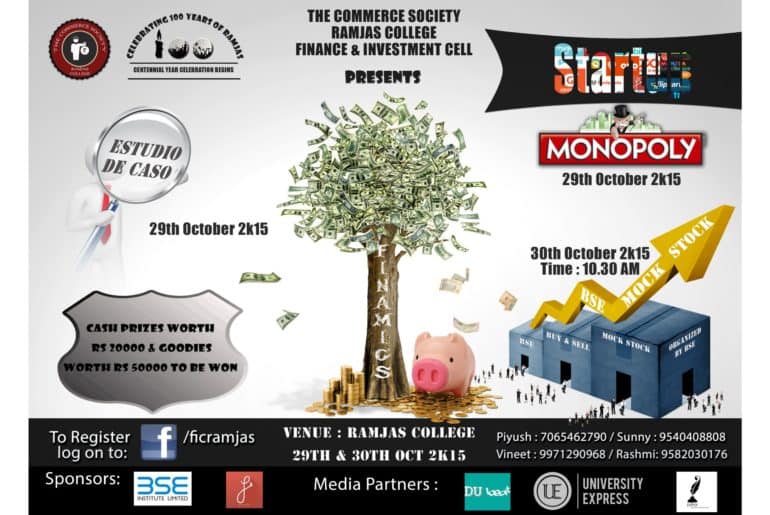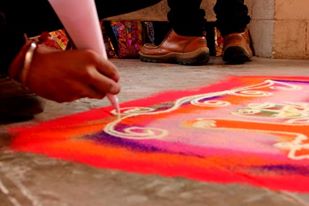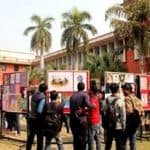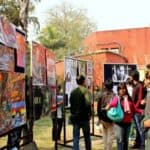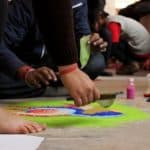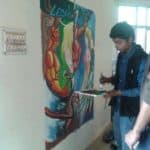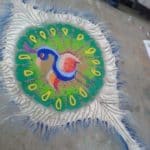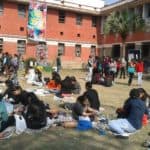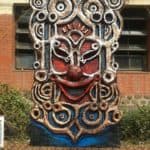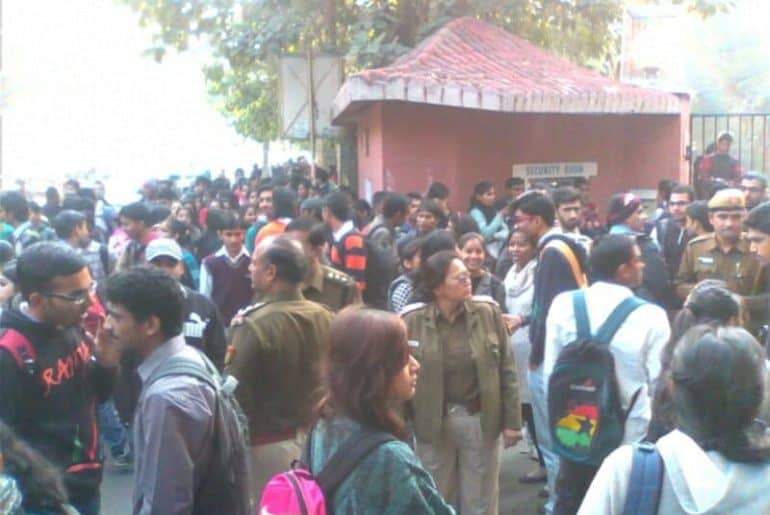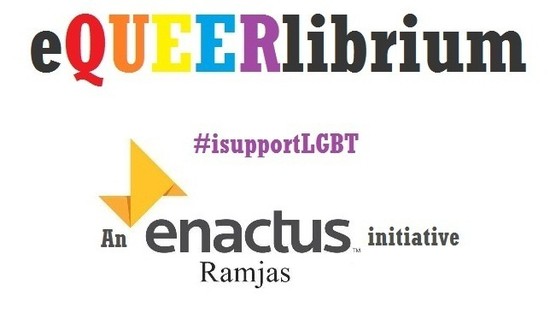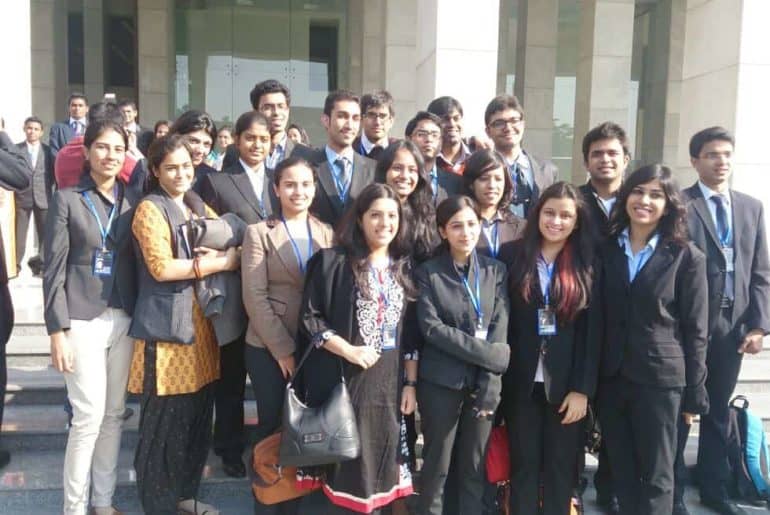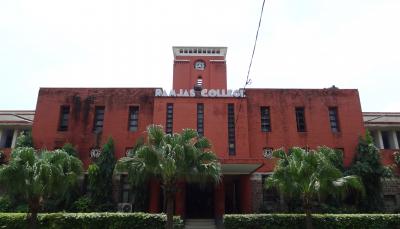‘Start up monopoly’, a finance case study competition ‘Estudio de Caso’ and a ‘Mock Stock Competition’ organized by the Bombay Stock Exchange. Day 1 (29th October) – Start up monopoly and Estudio De Caso With around 500 registrations online, Monopoly was easily the star attraction of the day with a 600 sq. feet life size monopoly board catching everyone’s attention. The traditional layout of the board was modified and included interesting possible ventures like the Sutta Lane and Sudama’s tea stall. An exemplary event, Estudio De Caso presented contestants with real life financial riddles for them to solve. The final contestations were divided into 6 teams of 2 each and were given a financial case study where they had to design a portfolio according to the requirements of the given ‘Case Study’. The final portfolios were handed over to Dr. ND Vohra, Dr. Sachi Yadav and Ms. Anshika Agarwal who were the judges. The winners of Estudio De Caso were Neha from NSIT and Archit Kshitiz from Christ University. Day 2 (30th October) – Mock Stock competition The Mock Stock too attracted major participation from across the city with around 500 registrations online and 240 of those selected for the online prelims. A final list of 36 teams were present on the final day of the competition. Teams had to buy and sell stock from the 10 different virtual companies ( Dr. Reddys, SBI, HDFC Bank and ITC among others) which were present and had to create a virtual market system totally governed by the demand and supply of the market thus created. Teams were given real time updates on fluctuating shares displayed on a projector screen. The team which gathered the highest profit won. A representative from the Bombay Stock Institute Limited gave an orientation to all the volunteers and participants. The winners for the Mock Stock were Chirag Jegyasa from Hansraj, Paridhi Mukund from CBS and Aditya Bhumika from KNC. Arindam Goswami [email protected]]]>
Enactus has been a pioneer in changing the lives of students and communities all around the world. But what makes it so special?
Last month, Enactus conducted its national competition which saw a participation from 60+ college teams from across the country. While all of the teams had projects which made a difference for a different community, teams from Hans Raj College, Ramjas College, and IIT-Delhi stole the show.
Here is a list of projects that were run by the winning teams, each including their impact and sustainability figures:
-
Enactus Hansraj had two major projects- Project Boond and Project Mithaas
Project Boond
Venture – Providing unprivileged masses an access to clean drinking water through production of low cost water purifiers that run without electricity.
Producers – Intellectually challenged individuals from NGO Samvedna.
People directly impacted – 6
People indirectly impacted – 440
Project Mithaas
Venture – The project aims at encouraging the farmers to take up the highly profitable business of beekeeping.
Producers – Farmers
Direct Impact – 6 farmers
Indirect Impact – 95 farmers
-
Enactus Ramjas portrayed 3 major projects and came first runners up –
Project Transcreations
Venture – Aims at financial, educational and societal inclusiveness benefits of members of the Transgender community by teaching arts of jewellery making, soft skills and many more
Producers – Transgenders
People directly impacted – 22
People indirectly impacted – 2580
Project Aradhaga
Venture – Project Aradhaga aims at the social and financial upliftment of the unemployed women of the slums of Jahangirpuri and JJ Basti areas of Delhi by teaching them accessory making.
Producers – Unemployed Women
People directly impacted – 15
People indirectly impacted – 1550
They have another project named Project Amlaan which has just started.
-
Enactus IIT Delhi, the winners of the competition presented 2 projects –
Project Exelsior India
Venture – Teaching kabadiwaalas the art of managing money, eliminating middlemen, providing them with microfinance opportunities and finally making recycled notebooks with the material picked up by kabadiwaalas. Under the project, they also created cardboard tables with solar lamps for students.
Producers – Kabadiwaalas
People directly impacted – 31,514
People indirectly impacted – 1,57,570
Project Aanch
Venture – Creating a stove which was eco friendly and trained women to produce them. It provides women highly cost-effective alternatives for cooking and reduces pollution.
Producers – Rural women
People directly impacted – 2312
People indirectly impacted – 1,35,000
Feature Image Credits: htcampus.com
Ishaan Sengupta
The Education Tree initiated Youth Photography Festival in New Delhi starting 29th March for four days. The inauguration for the festival was held at DLF Place, Saket on 29th March which was followed by Photo Treasure Hunt. A live photo booth was set up for the first day as well. Day 2 at Youth Photography Festival had an early morning photo-walk at Chandni Chowk where the photographers captured the real essence of tradition Dilli. Second day also witnessed a photo exhibition and a jam session at DLF Place.
For the last two days, the festival moved on to the North Campus, Delhi University for photography talks by experienced and young photo artists. The artist talks were held at Kirori Mal College and Ramjas College on 31st March and 1st April respectively.
It is most important to understand your own photographs: S.Paul
S.Paul, India’s most published and awarded photographer internationally shared his personal experiences in the field of photography during the photo talk on 31st March at Kirori Mal College. Talking about cameras and photographs, Mr Paul also displayed his work for the audience on screen, wherein he was explaining the reference and relevance of each photograph. His display collection mainly revolved around the theme “trees”, which denoted The Education Tree, organizers of Youth Photography Festival.
Mr. Paul during his 2 hour session created an interactive environment in the chat room. He was cracking light jokes to which the visitors were all praises for the photographer. The artist was talking in Hindi and answering queries of photographers who had come to attend the photo talk.

He stressed on the fact that a photographer should understand his own work. “Being a good photographer is not that difficult, but being a good analyst is must”, he said. Mr Paul also felt that if someone cannot explain what he or she has clicked, that person is not a good photographer. He also talked about various competitors and friends when he decided to choose photography as a career and discussed pictures subject wise like community, nature, fashion among others.
On being questioned about how should one choose his subject for photography, S. Paul said, “Let us take street shooting, for example. In your first visit do not take the camera along. Studying the culture of street is must, knowing what happens when and where is necessary for a photographer. If one happens to understand this, then take your camera to shoot your subject.”
Photographer can’t afford to miss a shot: P. Kumar
P. Kumar is a wildlife photographer and a teacher of zoology at Hans Raj College, Delhi University. He talked about how a photographer should learn composition to be good at what he wants to be. He dictated various incidents of his life associated with the field of photography. He displayed his wildlife works on the screen and explained the story behind each picture. His collection included photographs from wildlife sanctuaries, zoos and jungles. The screen also displayed works which ranged from seas to mountains and from cities to villages.
Kumar based his lecture on the four P’s – Passion, Purpose, Photography and Prayer. He associated the photographers with the elements of photography that are faith, prayer and conviction. He also talked about abilities of a photographer that can go waste if there is lack of these elements.
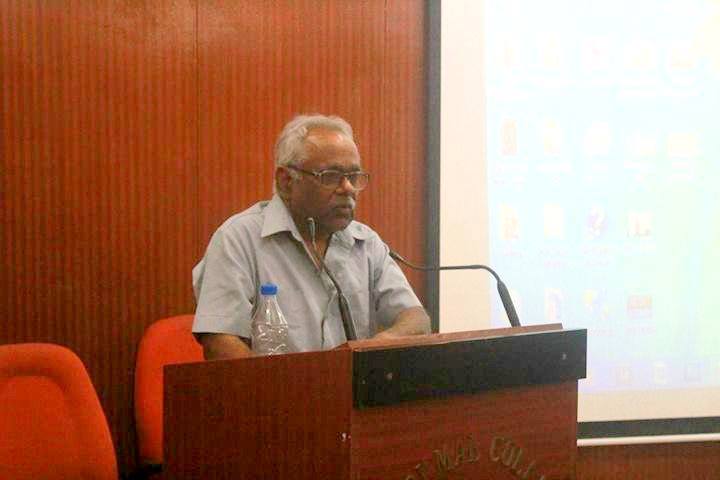
P. Kumar displayed his pictures with Anurag Kashyap and Abhinav Kashyap (alumnus of Hans Raj College) and talked about his heroes. Displaying magazine covers on which his pictures were featured, he says, “Photography needs an element of desperation. Until and unless you are dying to click something, that won’t be shot well.” He mentioned how the kind of camera isn’t important, but the style is. “You will have a big camera and a heavy tripod, you will take 20 minutes to set up and you will miss the shot. In photography, one can not afford to miss a shot. If he or she does, he is not a photographer”, he adds.
A little was also discussed about structured system created for the photographers where they do mainstream photography and do not understand the meaning behind it. Before ending the session he threw some light on conceptual imagery and played a few videos shot by him.
It depends on what part of your work you wish to show: Shiv Ahuja
Shiv Ahuja is a young music photographer who based his talk in Ramjas College on 1st April. Shiv, who is a musician himself developed an interest for photography. He also shared his experiences with the bands he used to shoot and the concerts he covered as a photographer. Ahuja highlighted his relations with Raghu Dixit and narrated the story of how he happened to be the photographer of his band.
As a photographer, Shiv says that he loves to travel. “Travel is one thing I can not compromise on. When I travel or go places for a show, in one concert I click around 500 pictures, but out of them not every picture is a great picture. It depends on what you want to show to the world”, he adds. So he gave the photographers tips about ‘how to be smart while creating portfolios.’
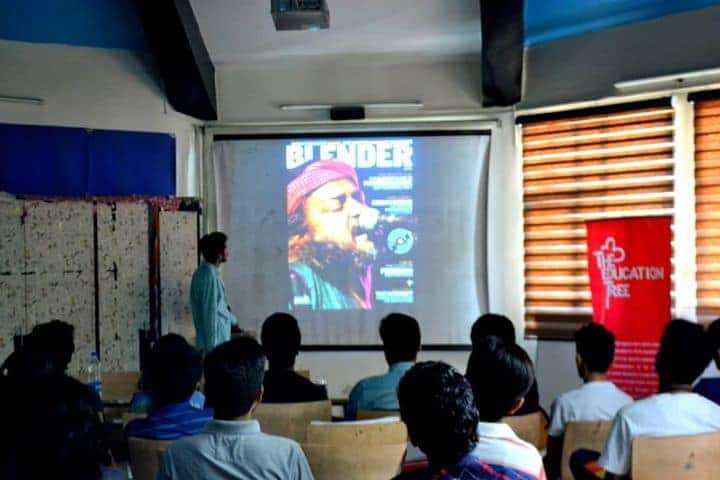
When asked a question about who does he keep in mind while clicking a photograph, the reader (magazines) or the subject (the musician) or his own interest, Shiv answers that it is the final reader who is always in mind. “I am clicking for a magazine. So what matters is what the publisher will like and if published what the public will like.”
Deaf artists get no exposure : Pintoo Kumar
Last speaker for the photography festival was Pintoo Kumar. Pintoo is a deaf photographer associated with Atulya Kala, an organization that works for deaf people. Pintoo through his translator, Smriti told everyone that he is an orphan who was born in Calcutta. He tells about the problems he faced in the school/university both in terms of finance and treatment. “Life for us is a copy paste game”
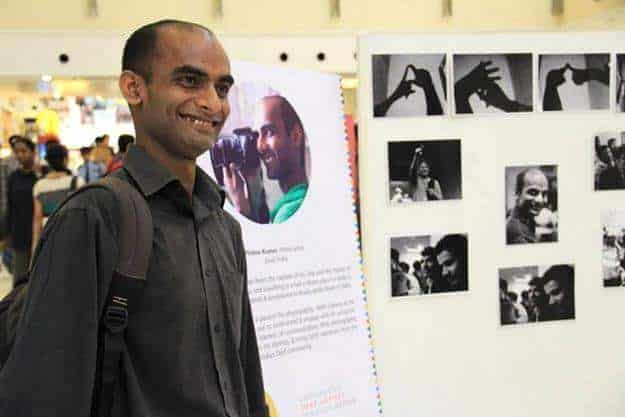
“I love capturing moments. I love telling stories about the culture through my pictures”, says Pintoo. Instead of displaying his photography works on screen, he displayed pictures of those deaf and dumb artists who face the same problems as him but who made made something meaningful out of their lives. Photographs of a deaf writer, another deaf artist, a deaf classical dancer, a deaf and mute tea vendor from Delhi and a picture of him were displayed on the screen. He expressed how all of them are not given opportunities and are given excuses of not being equally able.
Pintoo also displayed four photos which pointed out the sign language for four letters of the word ‘deaf’. Pintoo sets out to understand and engage with his surrounding and transcend the barriers of communication. He was appreciated by everyone by raising the hands, which is a sign language for clapping.
With this the Youth Photography Festival #YPF came to an end.
Image Credit : The Education Tree
]]>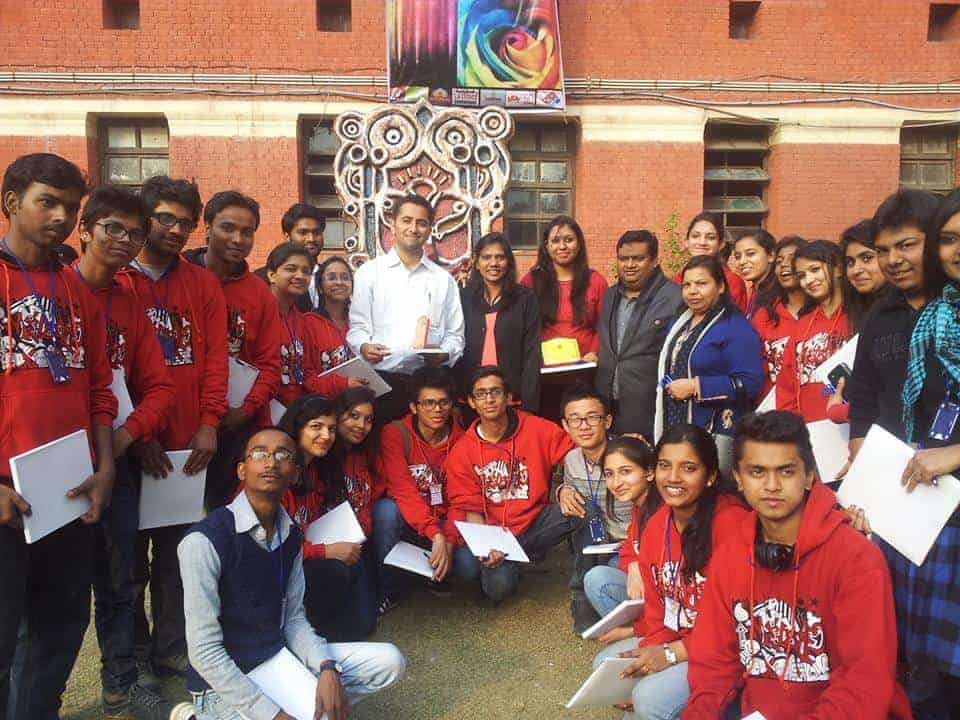
Ramjas College held its fine arts fest Expressoezz and art exhibition, Efflorescence, on 12th and 13 February, 2014, conducted by the Fine Arts Society of the college. The fest was a grand success and saw participation from all over the University with colleges like Gargi, Miranda House, LSR, Janki Devi Memorial, Sri Venkateshwara and Hindu etc. taking active part in the competitions.
Efflorescence, the art exhibition was much appreciated with its oil paintings, sketches, canvas, acrylic and posters made by the budding artists of the college.
The main attraction of the fest was a 7 feet tall Dhoom: 3 inspired mask made by Melange members, along with graffiti.
Various competitions were held in the two days and winners were given cash prizes, vouchers and mementos by the sponsors, Lions Club Delhi Veg and Victory Zeal. Following are the competitions and their respective winners:
Competition Winners
Ignition: Poster Making 1. Jayshree Bhagbati (Ramjas)
(Theme: Youth Power) 2. Raju (DCAC)
Flourish the Perish 1. Prachi Saxena &
(Best out of Waste) Anupreksha Jain (Shaheed
Bhagat Singh College)
2. Leepakshi, Apoorv &
Anshu (JDM)
Naqaab Sonia and Karishma (JDM)
(Face Painting)
Street Hustler Kishan (DCAC)
(Graffiti)
Apart from the competitions, there were also fun games adding to the spirit of the carnival-like fest such as Blind Date, Paper Dance, Tattoo Making, Snap Antakshaari and Treasure Hunt-the Lost Symbol.
The Principal of the college said that the “Fine Arts fest of Ramjas College is better than any other society fest in Ramjas and much better than the college fest!”
President of the society, Hitesh Athwani added “It was all a sincere, dedicated and coordinated team effort. Principal Sir was also impressed by our work, what else a society wants! Mélange has again broken its records of previous successful fests and set the benchmark high for its successors and also any other Fine Arts society in DU.” (sic)
The Title sponsor of the extravaganza “Lions Club Delhi Veg and Victory Zeal” awarded the Presidents Hitesh Athwani and Surabhi Chopra and Best Coordinator Seember Hussain with “Award of Appreciation” for the commendable job done in the fest.
Check out the DU Dastan: Ramjas College:
Image credits: Fine Arts Society, Ramjas College
Ramjas College recently hosted their Annual Athletic Meet, an intra-college sports event organised by the Sports Department of Ramjas from the 11th to 13th of February. The college football ground, which was the venue for the various athletic events, witnessed a great reception on its inaugural day as high levels of energy and enthusiasm seemed to grip the college by its loud and exciting atmosphere.
The Athletic Meet played host to several different categories of competitive events on its first day. In the category of 100 m (Men’s) Sprint races, Praveen, a second year B.A. Program student stood first. The Women’s category for the same resulted in Aruna Chaudhary, another second year B.A. Program student, earning herself a hard earned win. First Year students, Pallav and Divyani from Physics department aced their respective groups of the 400 m race. In Long Jump (Women’s), Sheetal, a second year Economics student won herself the first prize while Mutum Yang Thauba (English student, Third Year) won the same medal from the Men’s division. Finally, Yajneer (B.A.P, Second Year) and Kavita (Physics student, First Year) won the first prize in Shot Put Men’s and Women’s division respectively.
The games and activities of the second day of the meet took place with a more casual and less competitive attitude. Events such as Matka race, Tortoise race, Banana race, among many others, were organised in order to get a larger number of participations. Thus, these fun and light events received a good reception, as it not only invited participations from students, but also drew quite a few members of the college staff.
The final day of the meet witnessed a group of events which were reserved for visually challenged students. This day of the meet, known as ‘Specially Abled Athletics Meet’ included sporting events such as Tug of War, Sack Race, Fun Race and so on. The day finally concluded with a Volleyball match between the students and staff members, with a substantial number of people coming to watch the clash between the two sides.
The three day Sports Meet seemed to be reaching out to a wider audience this year, with attractive posters and banners noticeably helping their cause. Dr. M. Chakravorty, Sports Head of Ramjas College, credits these additional participations to the introduction of a new directive where students are awarded credit marks for participations in such events. Further elaborating on the overwhelming response this year, she said “Our motto is mass participation, and I feel very pleased and satisfied to see that we have been able to encourage sports on such a great scale this year. We hope to continue achieving greater success in the coming years.”
The students of Ramjas College stood their ground in a strike organised by the Students Union of the college on Tuesday, 28th January 2014. Over 800 students turned up for the strike in a direct attack on the College Principal, Dr. Rajendra Prasad.
The protest demanded a financial enquiry and transparency of college funds. “They get 2 crore rupees and all they make is a staff room, this is not the college’s money, it’s ours!” said a participant of the strike. We weren’t able to confirm the allegation independently.
Bisham Swami, President of Ramjas College says, “They get Rs. 20,000 from the college canteen as rent, yet they don’t provide us any funds for our college fest, where does all this money go? When asked for more information about this money all the principal gives us is a balance sheet which is just not enough.”
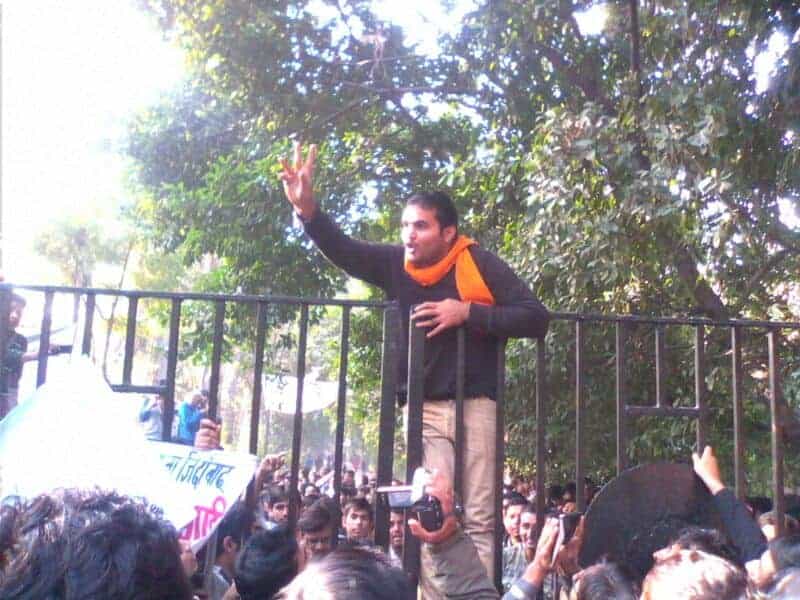
All students crowded the front gate of the college shouting slogans and asking for their demands to be fulfilled. Students were also seen trying to climb the college gate to get inside. All this also effected classes, as most batches suspended classes for the day. However, classes were commenced soon outside the college at tea stalls and Delhi School of Economics for some of the departments.
Demands that the students put up were proper funds for fests, transparency of funds, a financial enquiry into this matter and equal representation to be given to students of the college in all committees being made. After hours of standing outside the college and serious discussions with the college principal the students union emerged successful when the principal succumbed to their demands and accepted them. The President said, “We have broken down a 27 year old tyranny; 29th January will see Ramjas’ first General Body Meeting”.
The college authority remained unavailable for comment on this matter.
The Supreme Court of India, which is considered the ‘final guardian and interpreter’ of the Indian Constitution sent shock waves across the world as it overturned the judgement of the Delhi High Court(2009) which declared Section 377 unconstitutional. The SC verdict infringes the ‘right to life and personal liberty’ that the Constitution of India promises to each and every citizen irrespective of their place of birth, caste, creed, religion, race or sex.
The SC’s move has moved all spheres of society, Delhi University being no exception. Enactus Ramjas, in collaboration with NGO ‘NAZ Foundation’ plans to start an online petition to restore the rights of personal liberty to the LGBT community. They also wish to forward the demand for withdrawal of the judgement criminalising sexual intercourse between same sex people.
In order to muster maximum support from the youth of DU, a Facebook page in name of ‘E-queer-LIBRIUM’ has been launched that works towards sensitisation towards the gay community. The group provides a platform to reflect the voice of discriminated and reach out to the concerned authorities. Not only is Enactus Ramjas supporting the LGBT community in their legal battle for equality and justice, but also the members have started an innovative plan called – ‘TransCreations’ where the transgenders are given an opportunity to work in the jewellery designing project of Enactus Ramjas. The jewellery designed is then sold online, in college fests and in select jewellery shops as well. “The workers are thus guaranteed an alternate respectable income, which is a small step towards making them socially acceptable, independent and strong.” said Robin Kumar, President, Enactus Ramjas.
Thus, while the fate of this minority group hangs on a loose thread, it is important for us to observe solidarity and create an atmosphere conducive to each and every member of the society.
Relevant links :
Official FB Page of ‘E-queer-LIBRIUM’ – https://www.facebook.com/equeelibrium
Official FB Page of the Trans’Creations’ Programme-https://www.facebook.com/Transcreations?fref=ts
A group of twelve students and five professors from the University of Delhi attended the 10th South Asian Economics Students Meet (SAESM) held at Lahore, Pakistan from 23rd to 30th December. This economic meet had an undergraduate students representation from Bangladesh, Bhutan, India, Afghanistan, Nepal, Pakistan and Sri Lanka.
The entire event was divided into two halves. The conference and various competitions were held on the first three days, followed by a retreat on the next three. Political Economy in South Asia was the overall theme for this meet, conversely, there were six sub-themes. University of Delhi, Lahore University of Management Sciences, University of Kabul, Symbiosis School of Economics, Pune, St. Xavier’s College, Kolkata and many more attended this event.
The students stayed in the Lahore University campus. The first day commenced with the national anthems of the seven South Asian countries being represented, which was followed by the opening ceremony- finally unraveling the 10th Annual Meet. Charvi Kain, LSR and Sambodhi Sarkar, St. Stephen’s College stood second in the quiz; Palaash Bhargava, KMC stood third in the Budding Economist and Chhavi Miglani from SRCC reached the final round for the Budding Economist.
Apart from leading the Indian delegation, Sambodhi Sarkar also won the Amartya Sen-Mehboob ul Haq Award. His paper on The Political Economy of Public Finance was deemed the best overall paper during the conference. Miranda House’s Amrita Garai won laurels for her paper on The Political Economy of International Trade as well.
Other students who represented the University of Delhi were Ishneet Kaur from KMC, Anuvinda PS from LSR, Manas Pathak and Jatin Bavishi of Ramjas College, Karan Kumar from DCAC, Stuti Oberoi of Miranda House and Ishita Asija representing IP College for Women.
After the hectic meet the students were taken for a day trip to Islamabad and for a short visit to the Harappan Valley. A professor of Lahore University also invited all students for lunch at his farmhouse.
The overall feeling by the students of India was that their image of Pakistan had changed and changed for the better. Charvi Kain said, “I felt as though Lahore was quite similar to New Delhi, the people were very warm and the experience had been quite enriching.” Whereas, Palaash Bharagava mentioned that he got to understand Political Economy way beyond the Indian way of learning. He even said that as Economics has various schools of thought, this event proved to be quite successful in making him understand different perspectives of Economics.
The principal of Ramjas College would have breathed a huge sigh of relief when every subsequent revelation pertaining to the fake admission scam left him unscathed. However, one shouldn’t suffer with a guilty conscience for long and therefore the principal has joined the ranks of the co-accused. Naresh Tau, admission scam mastermind spilt the beans when he told the police that he gave Rs 80,000 and a bottle of Johnnie Walker to ensure the fake admissions met with no resistance from within the college, to college principal Rajendra Prasad. Although the Principal has denied allegations, he has been charge sheeted in the case filed before the Tis Hazari Court.
Delhi Police believes that in the last two years 36 students have gained admission in the college using forged mark sheets. As a result, 28 charge sheets have been filed wherein several admission committee members of the college have been named as suspects including the convener PK Malhotra along with the “dealing assistants” who handled the admissions in the absence of the teaching staff. The police have identified discrepancies and “mistakes” which would be more compatible with a fixed cricket match. Shockingly, the admission committee overlooked conspicuous misprints in the mark sheets. What is amazing to note is the fact that the staff signed on admission forms backed by mark sheets that had misspelt ‘ninety’. Hence it is apt that a charge sheet says, “It seems that staff of the admission committee has benefitted the accused knowingly.”
As far as the Principal is concerned however, the charge sheet indicting him also mentions “no evidence yet” on his role in the scam. The scamsters, including several former and current Ramjas students, charged exorbitant amounts from students ranging from 1 to 6 lakhs to forge their mark sheets.
It seems as if the admission sham is getting murkier by the minute with skeletons tumbling out of the closet as every revelation comes along. What remains to be seen is whether the Principal manages to clear his name once this shameful affair is over and done with.

